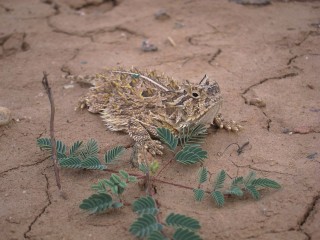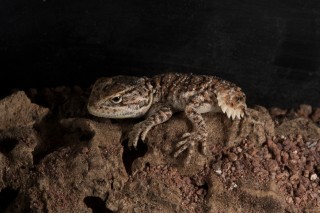
May 13, 2021
The Fantasic Horny Toad
- as seen by -
 Don Boyer
Don Boyer
These small lizards are truly fantastic reptiles with a number of specialized adaptations. There are 20 species of horned lizards found in North America from Canada to Guatemala.
They are not toads, but their round, squat bodies somewhat resemble that of the toad. The genus name, Phrynosoma, is derived from the Latin word phrynos which means toad and soma means body. They have impressive armaments with a variety of spiny scales covering their bodies and large horns on the backs of their heads. This makes them more difficult for predators to swallow and also aids in their camouflage. Their flattened bodies often are the same coloration as the surrounding ground. These lizards move in short bursts, and when they stop, they scrunch into the ground making them very difficult to detect.
Despite these defensive mechanisms, they face a variety of predators such as snakes, lizards, birds, wild cat species, dogs, coyotes, and foxes. Horned lizards have evolved a remarkable chemical defense. In most species, when confronted by dog-like predators such as kit foxes and coyotes, they can squirt a fine stream of blood up to six feet away out of one or both eyes. Some component of their blood is very tasteful to canid predators and may make them unpalatable.
Another interesting aspect of the ecology is that horned lizards are ant specialists with around 50% of their diet made up of harvester ants (Pogonomyrmex species). The horned lizards have a natural immunity to the powerful venomous stings of these ants but also have another trick. Once in the lizard’s mouth, the ant is quickly covered in a layer of mucus secreted by glands in the lizard’s throat. This prevents the ants from stinging as they are swallowed by the lizard.
Lastly, I leave you with a quote from Dr. Wade C. Sherbrooke, herpetologist and horned lizard expert, “Over the centuries, these creatures have influenced the mythology and art of prehistoric and historic peoples of North America. Their place in nature has always been, as it still is for us today, worthy of contemplation”.
This desert horned lizard, P. platyrhinos, (above) was active in the late afternoon in the Mojave Desert scurrying from brush shade patch to shade patch. Surface temperatures there were above 130F.




Leave a Comment